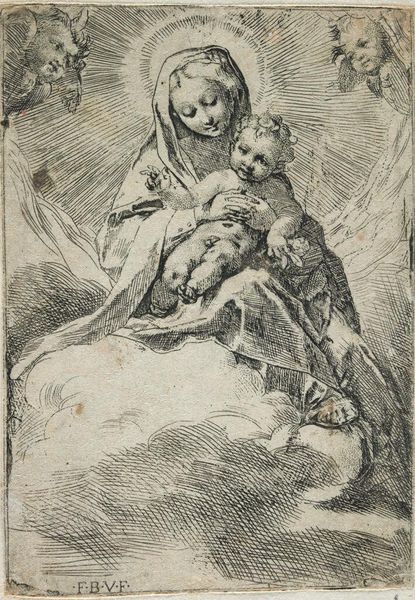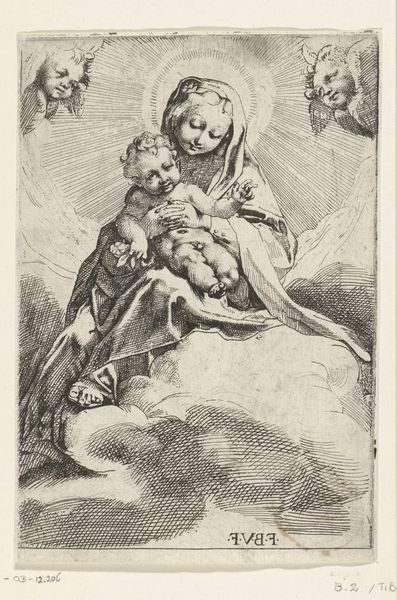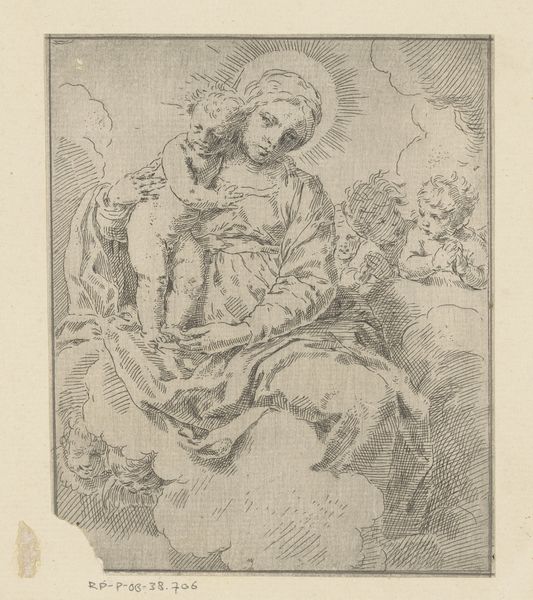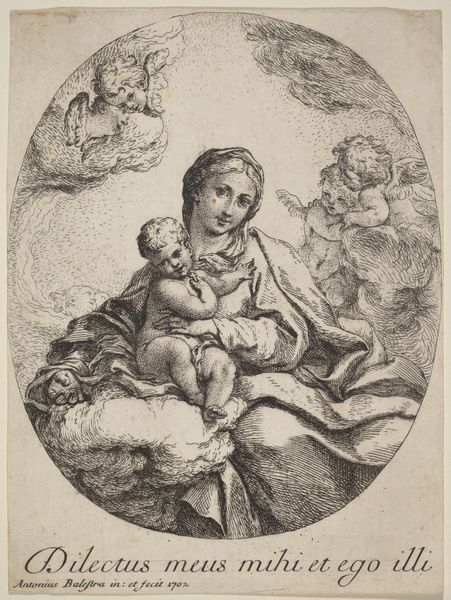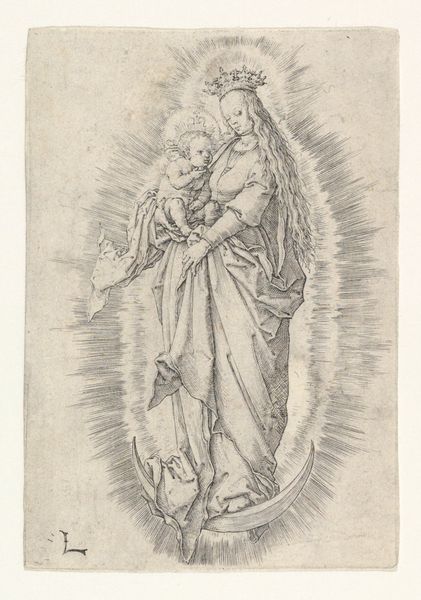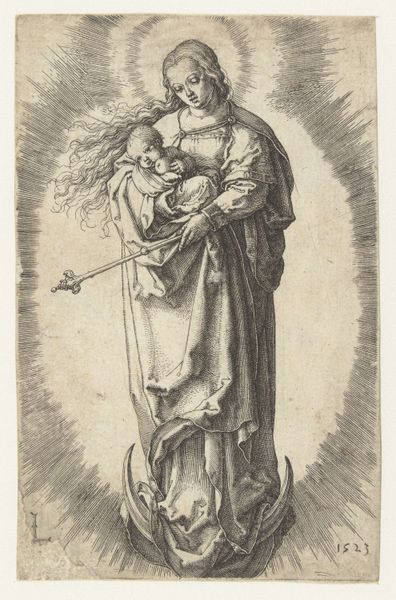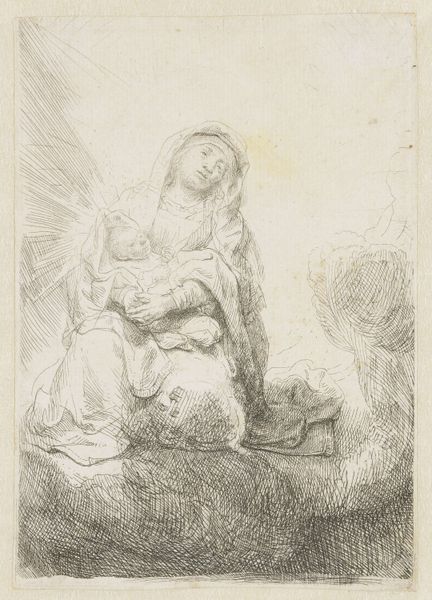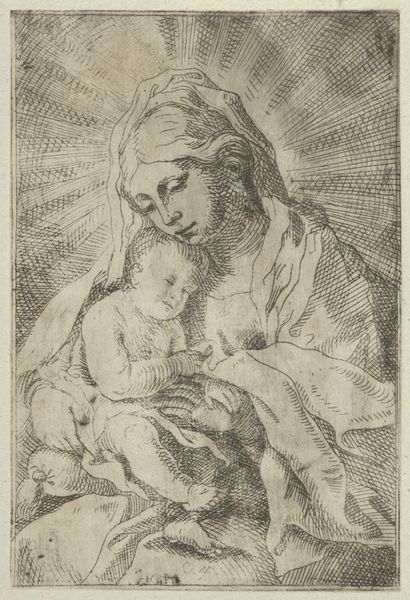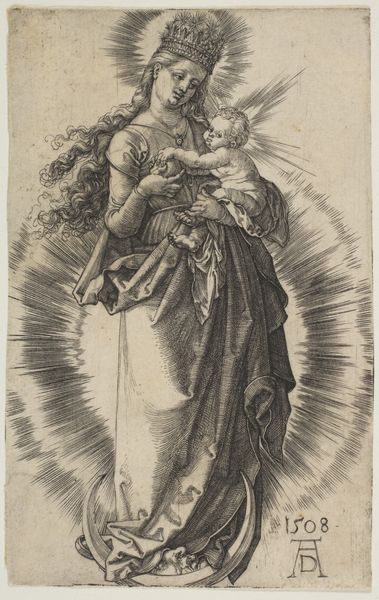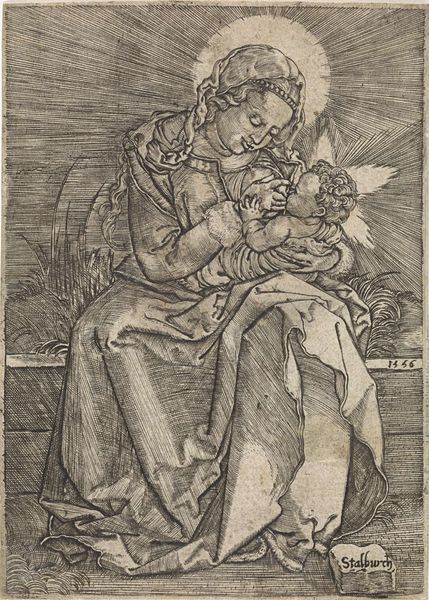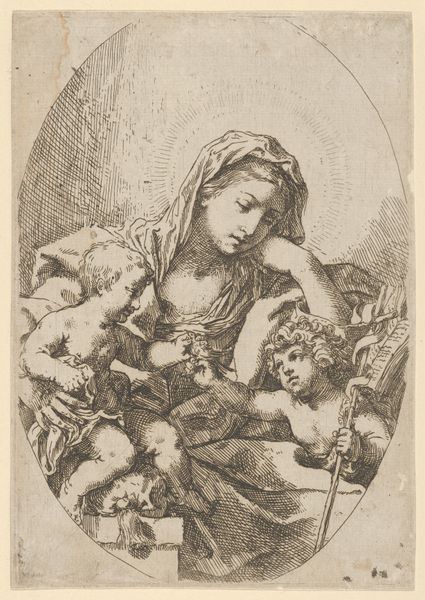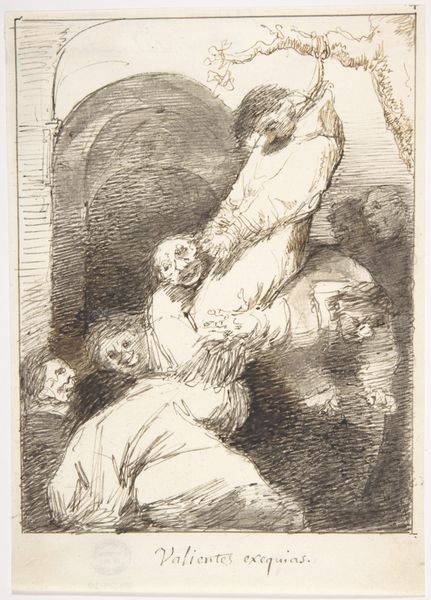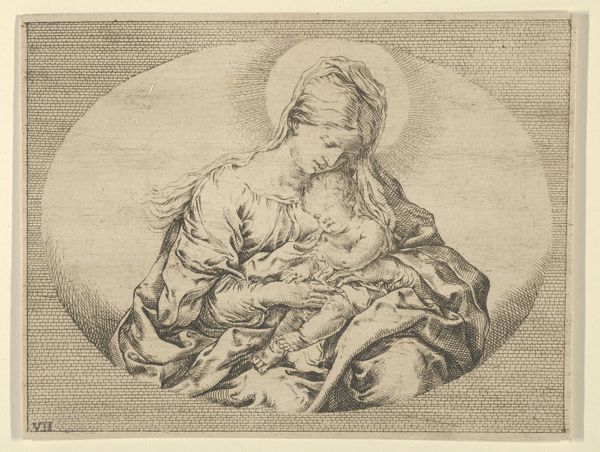
drawing, print, engraving
#
portrait
#
drawing
# print
#
mannerism
#
figuration
#
child
#
italian-renaissance
#
engraving
Dimensions: sheet: 6 x 4 7/16 in. (15.2 x 11.3 cm)
Copyright: Public Domain
Curator: Immediately, I’m struck by the delicate serenity of this engraving. Editor: Indeed. Let’s delve into Federico Barocci’s “The Virgin Seated on a Cloud,” created between 1580 and 1584. He offers a particularly humanist vision during the late Italian Renaissance. Considering the context of Counter-Reformation art, how does this resonate? Curator: The sweetness, almost the vulnerability, with which Mary gazes down suggests not so much divine remove as maternal warmth and tenderness, which, to me, signals an ideological shift. The angels, too, seem less celestial than domestic. The artist even signed his initials at the lower left! Editor: Absolutely. Barocci’s talent for capturing human emotion through the symbolism of familiar religious subjects provided direct access for both the informed and un-informed worshipper of the era. Think, for example, of Mary’s modestly downcast eyes. Curator: Are you suggesting this imagery may act as a symbolic visual code to promote particular behaviours? I agree the body language exudes purity. We could interpret this symbolism within a context of gender and power… Who is afforded agency here, if any? Editor: The Virgin as a figure transcends pure religious significance. Think of the Madonna’s visual omnipresence – across cultures and faiths. This particular Renaissance iteration is laden with inherited visual weight but still echoes throughout secular contemporary art. Curator: A provocative thought. It asks us to look at how symbols maintain relevance or are radically reinterpreted, which leads to so many avenues of sociopolitical study! What did the artist believe? Editor: An unknowable, I think, but we have centuries of receptions to consider. It’s clear Barocci crafted lasting motifs—motherhood, innocence, the ethereal... What this work presents remains a compelling, layered topic to this day. Curator: So much more to discover when you consider history in concert with its continuing echoes.
Comments
No comments
Be the first to comment and join the conversation on the ultimate creative platform.
